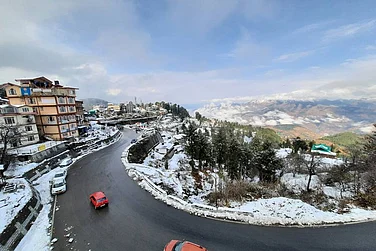Biparjoy, a very severe cyclonic storm that has developed in the Arabian Sea, is likely to affect the progress of the monsoon season, as per the Indian Meteorological Department (IMD).
The development of the cyclone has delayed the onset of the Southwest Monsoon, which usually begins in June and ends in September. Mahesh Palawat, the vice president of Meteorology and Climate Change at private forecaster Skymet Weather Services, told Down to Earth that “Westerly winds, which pull the monsoon towards the Indian mainland, are weak now. All the moisture is rotating around the cyclone.” He added that rainfall will be weak in many parts of India.
A senior scientist at the IMD said that beyond the southern peninsula, the monsoon will progress only after the cyclone degenerates. The southern peninsula will receive rain because of the cyclonic storm as well as a low-pressure area forming over the Bay of Bengal.
Mahesh Palawat said, “The cloud mass is concentrated around this system and enough moisture is not reaching the Kerala coast. Though the criteria for monsoon onset can be met in the next two days, it will not be a thumping start.”
On Tuesday, Skymet Weather also said, “The powerful weather system in the Arabian Sea may spoil the advancement of the monsoon deep inland. Under their influence, the monsoon stream may reach coastal parts but will struggle to penetrate beyond the Western Ghats."
Roxy Matthew Koll, a climate scientist at IITM, told Down to Earth that cyclones and monsoons depend on each other – a strong monsoon will not allow a cyclone to form. It is the weak onset of the monsoon that has resulted in the cyclone, and not the other way around. It is uncertain what the cause of the weak onset could be, although Koll speculates that it could have been caused by El Niño, a weather phenomenon that takes place when the ocean temperatures rise. This rise in temperature causes a change in atmospheric patterns, which weakens the circulation of monsoons above India. Generally, there has been a trend of weaker monsoons in India during El Niño years.
According to Down to Earth, Cyclone Biparjoy has had the second most rapid intensification, after Cyclone Amphan. In the last decade, cyclones have been intensifying very rapidly because of the warm ocean conditions.


























